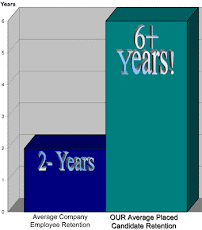While overall unemployment creeps forward, joblessness among business-tech pros reaches a record low.
Joblessness among American IT workers averaged 2.1 percent last year, down from 2.5 percent in 2006. That's the lowest unemployment rate for IT pros since the government began using the current method to track employment in 2000, when IT joblessness stood at 2.2 percent.
In 2007, according to our analysis, 3,758,000 workers in the
The low IT unemployment rate of 2.1 percent, which many economists considers full employment, bolsters an argument forwarded by many CIOs: it's hard to find qualified IT professionals.
Of the eight IT occupations classified by the government—managers, computer scientists/systems analysts, computer programmers, computer software engineers, computer support specialists, database administrators, network/computer systems administrators and network systems/data communications analysts—only one saw a decline in the number of employed. That occupation, computer programmers, employed 526,000 people last year, a loss of 6.4 percent. As fewer companies develop custom systems combined with the increased use of offshoring for coding applications, the ranks of employed programmers in the
The vigor of the IT workforce comes at a time when growth in other occupations stagnate as the American economy slows. Overall unemployment in the














No comments:
Post a Comment